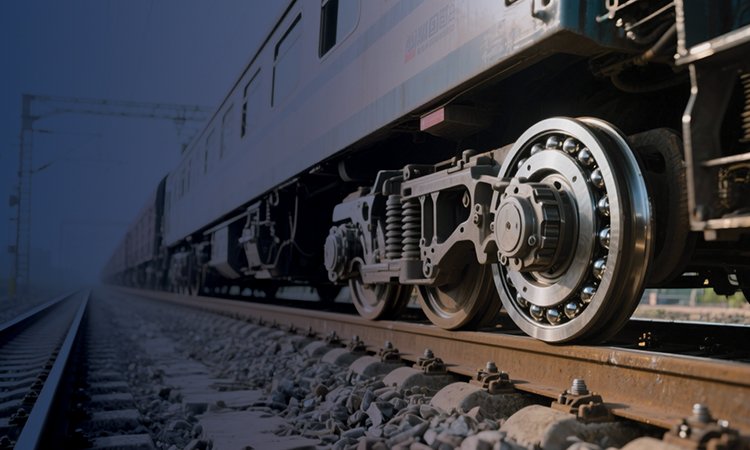The railway industry is often described as the backbone of national infrastructure, enabling the movement of people, goods, and resources across vast distances. At the heart of this massive transportation system lies an often-overlooked yet critical component—bearings. From locomotives and passenger coaches to freight wagons and signaling equipment, bearings ensure the smooth, safe, and efficient functioning of railways. They withstand heavy loads, high speeds, and harsh operating conditions, making them indispensable for reliability and performance.
The Role of Bearings in Railways
Bearings are designed to reduce friction between moving parts, ensure efficient transmission of loads, and enable controlled motion. In the railway context, this means ensuring that rolling stock and associated equipment can operate with minimal resistance, reduced wear, and enhanced safety. Given the enormous dynamic forces at play, especially in freight wagons carrying bulk cargo or high-speed trains racing across tracks, bearings play a pivotal role in ensuring operational efficiency.
Key Applications of Bearings in Railway Systems
Wheelset Bearings
One of the most vital bearing applications in railways is in wheelsets—the axle and wheel assembly that makes contact with the track. Wheelset bearings must withstand heavy radial loads, axial stresses, and impact shocks while maintaining low friction. Modern designs employ cylindrical roller bearings and tapered roller bearings, which provide durability and support high-speed operations. Advanced sealing systems also protect these bearings from dust, moisture, and other contaminants encountered in railway environments.
Traction Motor Bearings
In electric and diesel-electric locomotives, traction motors drive the wheels through axles. Bearings in traction motors endure both radial and axial loads while operating under electrical currents and vibration. Special current-insulated bearings and hybrid ceramic bearings are increasingly being used to prevent electrical erosion, ensuring longer service life. These bearings also need superior heat dissipation to withstand the high operating temperatures of traction systems.
Gearbox Bearings
Railway gearboxes transmit power from the traction motor to the axles. Bearings used in gearboxes face high torque, misalignment, and vibration stresses. Tapered roller bearings and spherical roller bearings are typically deployed here, providing high load capacity and flexibility in alignment. Precision engineering is essential, as gearbox bearings directly influence noise, vibration, and smooth acceleration of trains.
Suspension and Bogie Bearings
Bogie assemblies, which house the wheelsets, suspension systems, and braking components, rely on robust bearings to ensure stability and ride comfort. These bearings absorb shocks from the track, distribute loads evenly, and allow for articulation of the bogie. Spherical plain bearings are commonly used in suspension systems, providing both rotational and oscillating motion under severe load conditions.
Door Mechanisms and Auxiliary Equipment
Beyond the heavy-duty drive systems, bearings are also used in auxiliary railway equipment such as automatic doors, HVAC systems, braking mechanisms, and pantographs (for electric trains). These applications often use ball bearings or needle roller bearings, enabling compact designs and reliable performance under frequent usage cycles.
Bearing Design Requirements in Railways
Load Capacity and Durability
Railway bearings are designed to handle extreme loads and shocks while ensuring long service intervals. For freight rail, the focus is on high static and dynamic load capacity, while for passenger rail, speed, comfort, and noise reduction take priority.
Safety and Reliability
Railways cannot afford failures that may cause derailments or operational delays. Bearings must be engineered with fail-safe mechanisms, robust seals, and superior material properties to guarantee reliability.
Lubrication and Maintenance
Efficient lubrication systems are critical. Modern bearings use long-life greases, oil-air lubrication, or solid lubricants to reduce maintenance requirements. Extended lubrication intervals reduce downtime & operating costs.
Resistance to Environmental Factors
Railway bearings face dust, rain, snow, and wide temperature variations. Effective sealing and corrosion-resistant materials are essential to protect them in such harsh environments.
Innovations in Railway Bearings
In recent years, innovations have transformed railway bearing design and application:
• Sensorized Bearings: Equipped with IoT-enabled sensors, these bearings monitor temperature, vibration, and load in real time, enabling predictive maintenance.
• Energy-Efficient Bearings: New designs reduce friction and heat generation, lowering energy consumption and improving overall system efficiency.
• Advanced Materials: Bearings made from high-purity steels, ceramics, and composite coatings enhance fatigue life and resistance to wear.
• Noise-Reduction Technologies: Specially designed raceways and roller profiles reduce vibration and noise, improving passenger comfort in high-speed trains.
Bearings in High-Speed Rail
High-speed rail introduces new challenges for bearings, including extreme rotational speeds, high centrifugal forces, and stringent noise and vibration requirements. Bearings for high-speed trains must be lightweight, precisely balanced, and manufactured with tight tolerances. Hybrid ceramic bearings and aerodynamic sealing systems are increasingly deployed to meet these demands, ensuring safety and reliability at speeds exceeding 300 km/h.
Bearings in Freight Rail
In contrast, freight rail emphasizes durability and load-bearing capacity. Bearings for freight wagons must endure millions of kilometers with minimal maintenance. Sealed-for-life designs and advanced roller geometries allow for extended service life, reducing operational costs for rail operators.
Bearings for Sustainability and Efficiency
The railway sector is increasingly focused on sustainability. Bearings that minimize friction contribute directly to energy efficiency, reducing fuel consumption and CO₂ emissions. Longer-lasting bearings also reduce material use and waste, aligning with circular economy principles. Manufacturers are investing in recyclable materials and eco-friendly lubrication solutions, further reinforcing the green credentials of rail transport.
Future Outlook
The future of railway bearings lies in digitalization and sustainability. With smart monitoring, railway operators can predict and prevent failures, thereby avoiding costly downtime. As electrification and high-speed rail expand globally, demand for high-performance bearings will rise. Indian manufacturers, already gaining prominence in export markets, are poised to benefit from this growth by aligning with international standards and investing in advanced manufacturing.
Conclusion
Bearings are silent enablers of railway efficiency, safety, and comfort. From wheelsets and traction motors to auxiliary systems, they ensure seamless functioning of the vast and complex railway ecosystem. With advancements in materials, design, and digital technologies, bearings are evolving to meet the growing demands of speed, load, and sustainability. As railways continue to modernize and expand globally, bearings will remain at the core of reliable, efficient, and eco-friendly transportation.



